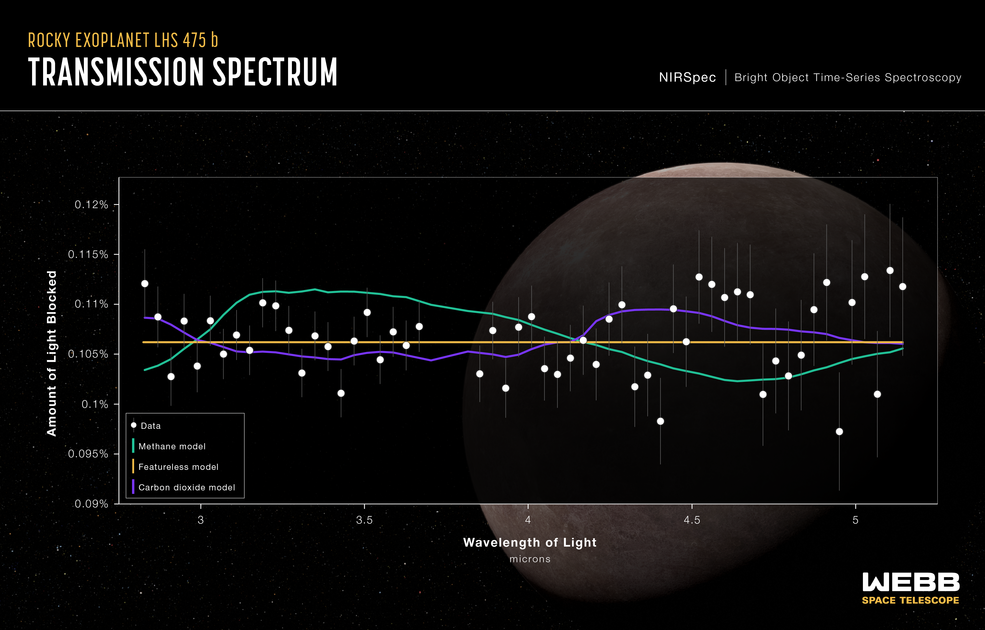For the first time since its launch in December 2021, NASA’s James Webb Space Telescope has found its first planet orbiting a star, researchers have confirmed. The planet has been formally classified as LHS 475 b, and shared many similarities with Earth. LHS 475 b is almost the exact same size as Earth, clocking in at 99% of the diameter of Earth. However, it’s also a few hundreds degrees warmer than Earth, so don’t expect to holiday there any time soon.
The research team had used data from NASA’s Transiting Exoplanet Survey Satellite, to determine that this part of the sky would potentially be of interest in the search for an exoplanet. Webb’s Near-Infrared Spectrograph (NIRSpec) was used for the observation, and only took 2 observations to clearly detect the exoplanet.

The illustration above, created using data from the NIRSpec, is consistent with a planet that has no atmosphere, as no elements or molecules had been detected at the current level of precision.
However, whether the planet actually has an atmosphere or not, is yet to be determined. Erin May, from the Johns Hopkins University Applied Physics Laboratory stated that “The telescope is so sensitive that it can easily detect a range of molecules, but we can’t yet make any definitive conclusions about the planet’s atmosphere.”
As the planet is several hundred degrees warmer than Earth, and so far no type of atmosphere has been determined, if clouds are present then this could lead researchers to conclude that this planet is more like Venus than Earth.
Venus has a thick carbon dioxide atmosphere that is shrouded with cloud. A dense carbon dioxide atmosphere is very difficult to detect, even more difficult to detect than when there is no atmosphere in fact.

Researchers have also confirmed that the planet completes a full orbit in just 2 days. An assessment that was instantly revealed due to JWST’s light curve. The exoplanet is orbiting a red dwarf star, which is less than half the temperature of the Sun, meaning that the exoplanet could indeed have an atmosphere.
LHS 475 b is relatively close in space terms. It’s 41 light-years away from Earth in the constellation of Octans. The confirmation of JWST’s first exoplanet observation is incredibly powerful. It’s proof of the precision of JWST’s instruments, which opens up the possibilities of finding many more Earth like planets out there.
It’s only 13th January, but I’m predicting a very inspiring and game changing year for JWST in 2023!

